ASSESS
The first step in scaling up HIV prevention programmes for adolescents and young key populations is to read clear data on the epidemic. Implementers need to see the complete picture by assessing the responses already in place and by understanding barriers to expansion.
 Young key populations at higher risk of HIV in Asia and the Pacific: Making the case with strategic information
Young key populations at higher risk of HIV in Asia and the Pacific: Making the case with strategic informationThis report recommends strategies for ethically involving young members of key populations in research. It builds the case for disaggregated data on these populations and estimates the sizes of young key populations in Asia and the Pacific. UNICEF, 2013
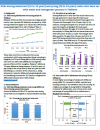 Briefings on HIV among adolescent key populations in South-East Asian countries
Briefings on HIV among adolescent key populations in South-East Asian countriesRisks among adolescent and young males who have sex with males and transgender persons in Thailand
HIV among adolescent and young key populations in Indonesia
The growing HIV epidemic among adolescents in the Philippines
These briefs provide data on the HIV epidemic among key population members aged 15-24 in three countries. The briefs report on risk and vulnerability factors, knowledge about HIV, testing rates, and use of services. Department of Health, Philippines, 2017
 Transitions study exploring early HIV risk among adolescent girls, young women and young female sex workers [in Kenya]
Transitions study exploring early HIV risk among adolescent girls, young women and young female sex workers [in Kenya]This brief describes the approach and outcomes of a study to understand the risk and vulnerabilities of adolescent girls and young women and young self-identified Kenyan sex workers aged 14-24. The goal was to inform the strategic design and expansion of HIV prevention programmes. The study used geographic mapping, immunological studies, a behavioural and biological survey, and mathematical modelling. NASCOP, 2018
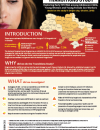 Transitions study exploring early HIV risk among adolescent girls, young women and young female sex workers [in Ukraine]
Transitions study exploring early HIV risk among adolescent girls, young women and young female sex workers [in Ukraine]This brief describes the approach and outcomes of a study to understand the risk and vulnerabilities of adolescent girls and young women and young self-identified Ukrainian sex workers aged 14-24. The goal was to inform the strategic design and expansion of HIV prevention programmes. The study used geographic mapping, a behavioural and biological survey, key informant interview, and mathematical modelling. Ukrainian Institute for Social Research, 2015
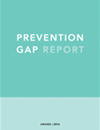 UNAIDS Prevention gap report 2016
UNAIDS Prevention gap report 2016This report presents detailed data on the progress in curbing the HIV epidemic globally and discusses the areas of focus required in order to improve outcomes.UNAIDS, 2016
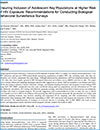 Ensuring inclusion of adolescent key populations at higher risk of HIV exposure: Recommendations for conducting biological behavioral surveillance surveys
Ensuring inclusion of adolescent key populations at higher risk of HIV exposure: Recommendations for conducting biological behavioral surveillance surveysThis paper reviews current ethical and sampling challenges and provides suggestions to ensure that adolescent key populations are included in surveillance activities—for the purpose of enhancing evidence-informed, strategic, and targeted funding allocations and programmes.
JMIR Public Health and SurveillanceJohnston et al, 2017
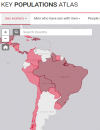 Key populations atlas
Key populations atlasThis atlas provides local-level data, not just on traditional global HIV monitoring indicators, but also data on stigma and discrimination, particularly in the health service and legal sectors. UNAIDS
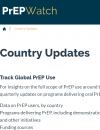 PrEPWatch country updates
PrEPWatch country updatesThese updates provide information submitted by countries on PrEP availability, funding sources, and guidelines. The website also offers broad information on PrEP scale-up.AVAC
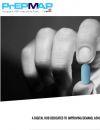 PrEPMAP: Your guide to PrEP in Asia and the Pacific
PrEPMAP: Your guide to PrEP in Asia and the PacificThis website offering information about PrEP: where to find it locally in more than 20 countries, and how to advocate for wider PrEP availability.APCOM
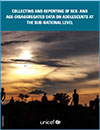 Collecting and reporting of sex- and age-disaggregated data on adolescents at the sub-national level
Collecting and reporting of sex- and age-disaggregated data on adolescents at the sub-national levelThis document guides countries through the process of collecting and reporting sub-national data on adolescents to inform programme planning and implementation efforts. It helps to identify data gaps for adolescents and to inform immediate programme planning needs at the sub-national level. UNICEF, 2016
 Rapid assessment check list: Analysis of plans & systems for delivering effective HIV prevention
Rapid assessment check list: Analysis of plans & systems for delivering effective HIV prevention This checklist covers HIV prevention strategy, management, implementation, and specific interventions (such as condoms and PrEP) in regard to key populations. The annex contains summary tables and checklists covering further assessment topics.
Rapid assessment check list
Rapid assessment check list - Annex UNAIDS, 2017
 Strengthening the adolescent component of national HIV programmes through country assessments: Adolescent assessment and decision-makers’ AADM tool
Strengthening the adolescent component of national HIV programmes through country assessments: Adolescent assessment and decision-makers’ AADM toolThis guidance document and spreadsheet tool are designed to facilitate country assessments in order to strengthen the adolescent component of national HIV programmes. The document provides in-depth analysis and describes the key steps for rapid assessments.
Adolescent assessment and decision-makers’ AADM tool
Adolescent Assessment and Decision-Makers' tool - Excel UNICEF, 2016
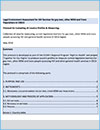 Legal Environment Assessment for HIV Services for gay men, other MSM and Trans Populations in EECA
Legal Environment Assessment for HIV Services for gay men, other MSM and Trans Populations in EECAThis tool produces country profiles that measure current legislative barriers in accessing HIV and other general health services in the Eastern Europe and Central Asia regions. It also addresses protection of lefts. The tool consists of a protocol describing the method and an Excel-based profile sheet for recording data.
Legal Environment Assessment for HIV Services for gay men, other MSM and Trans Populations in EECA
Legal environment assessment - Annex - Country tables.xlsx ECOM, 2018
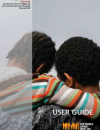 The people living with HIV stigma index: User guide
The people living with HIV stigma index: User guideThe stigma index collects information about the experiences of people living with HIV related to stigma, discrimination, and human rights. It is for use by and with people living with HIV. The guide contains tools and an agenda for training people who will conduct the survey and explains how to use the results for advocacy. The stigma index website provides reports from countries that have conducted the survey.
The people living with HIV stigma index: User guide (ARABIC)
Index de stigmatisation et discrimination envers les personnes vivant avec le VIH
Índice do estigma de pessoas vivendo com HIV
Индекс стигмatизации людей, живущих с ВИЧ
El indice de estigma en personas que viven con VIH
UNAIDS, ICW, GNP+, 2010